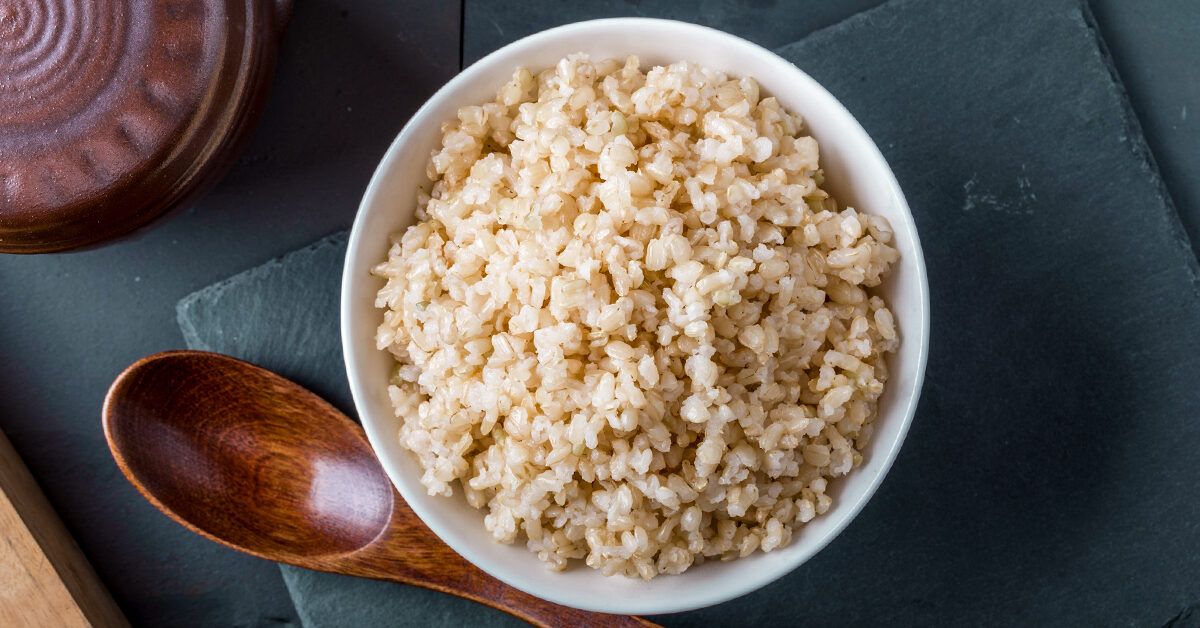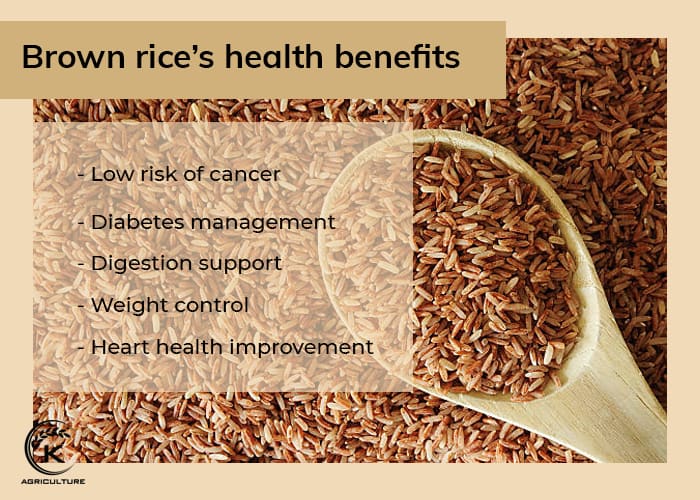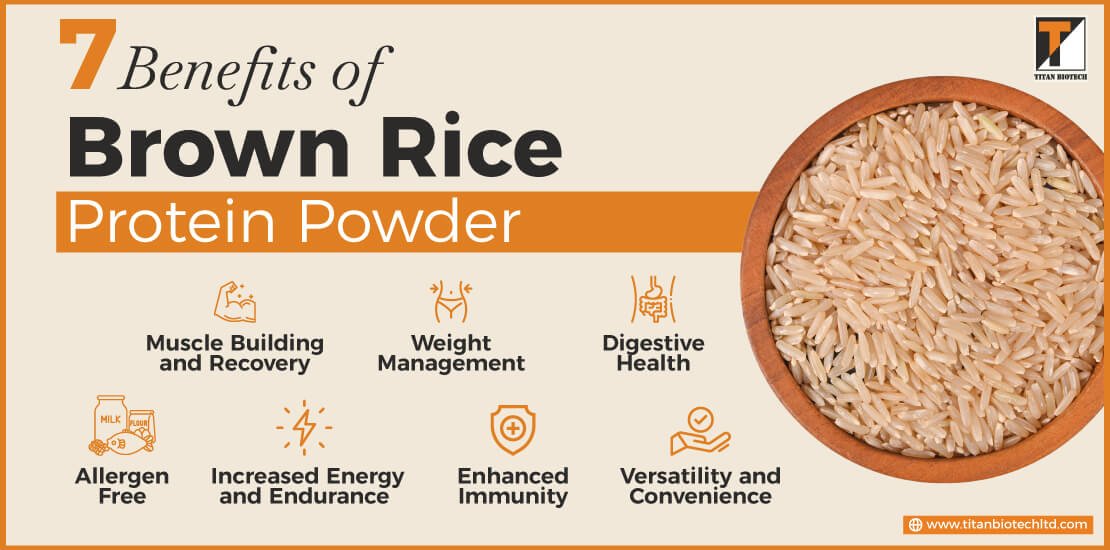brown rice benefits
Here is the article.
We often consider it simply a healthier alternative to its refined counterpart, white rice. However, its true value extends far beyond that simple comparison. The humble brown rice grain is a nutritional powerhouse, a testament to the fact that sometimes, the simplest foods offer the most profound health benefits. We believe that by understanding the comprehensive advantages of incorporating this grain into your diet, you can unlock a new level of wellness and vitality. Our mission is to provide you with the most thorough and accurate information available, ensuring that you are equipped to make informed dietary choices that will positively impact your longterm health. We will delve into every facet of its benefits, from the microscopic nutritional components to the macrolevel systemic improvements it can foster.
The Fundamental Difference: Brown Rice vs. White Rice
To truly appreciate the benefits of brown rice, we must first understand what sets it apart. The primary difference lies in how the grain is processed. A brown rice kernel consists of three main parts: the bran, the germ, and the endosperm. The bran is the hard, outer layer rich in fiber, minerals, and antioxidants. The germ is the nutrientdense core, packed with vitamins, healthy fats, and various phytonutrients. The endosperm is the starchy interior. White rice is produced by removing the bran and the germ, leaving only the starchy endosperm. This process, while extending the shelf life of the grain, strips away a significant portion of its nutritional value. In contrast, brown rice retains all three components, making it a whole grain and a far more nutrientrich food. This single distinction is the foundation of all the incredible health benefits we will explore.
Unlocking a Healthier You: The Key Benefits of Brown Rice
Benefit 1: A Champion of Digestive Health
We find that one of the most immediate and noticeable benefits of consuming brown rice is its positive impact on the digestive system. This is primarily due to its incredibly high fiber content. The bran layer of the brown rice grain is an excellent source of dietary fiber, both soluble and insoluble. This fiber acts as a bulking agent, adding mass to your stool and promoting regular bowel movements. This regularity is crucial for preventing constipation and maintaining a healthy colon.
Furthermore, the insoluble fiber in brown rice acts as a prebiotic, feeding the beneficial bacteria in your gut. A healthy gut microbiome is essential for a robust immune system, effective nutrient absorption, and even mental wellbeing. By nourishing these good bacteria, brown rice helps to create a balanced and thriving internal environment. We have seen time and again how individuals who incorporate whole grains like brown rice into their diet experience a significant reduction in digestive discomfort and a noticeable improvement in their overall gut health.
Benefit 2: A Guard for Cardiovascular Wellness
Heart disease remains a leading cause of mortality worldwide, and we are constantly seeking effective dietary strategies to combat it. We are confident that brown rice offers a powerful tool in this fight. The high fiber content plays a dual role in protecting your heart. Firstly, the soluble fiber helps to lower LDL ("bad") cholesterol levels by binding to cholesterol in the digestive tract and preventing its absorption. This, in turn, reduces the risk of plaque buildup in the arteries, a primary cause of atherosclerosis and heart attacks.
Beyond fiber, brown rice is rich in a compound called lignans. These plant compounds have been shown to reduce blood pressure and inflammation, both of which are critical factors in cardiovascular disease. Additionally, brown rice is a fantastic source of magnesium, a mineral vital for maintaining normal heart rhythm and muscle function. We recommend making brown rice a staple in your diet to support longterm heart health and reduce your risk of cardiovascular events.
Benefit 3: A Powerful Ally in Weight Management
For those seeking a sustainable path to weight loss or weight maintenance, we believe brown rice is an invaluable ally. Its high fiber and protein content contribute to a feeling of satiety, or fullness, which can help you consume fewer calories overall. When you feel full and satisfied after a meal, you are less likely to snack on unhealthy foods later in the day.
The complex carbohydrates in brown rice also provide a slow and steady release of energy, preventing the sharp spikes and crashes in blood sugar that often lead to cravings and overeating. This consistent energy supply helps to stabilize your appetite and metabolism. From our experience, we find that individuals who replace refined grains with whole grains like brown rice are more successful in achieving and maintaining a healthy weight. Its nutrient density means you are getting more bang for your caloric buck, nourishing your body without excess calories.
Benefit 4: Managing Blood Sugar and Preventing Type 2 Diabetes
We know that the glycemic index (GI) of a food is a crucial consideration for individuals with diabetes or those at risk. The GI measures how quickly a food raises blood sugar levels. White rice has a high GI, meaning it can cause rapid spikes in blood glucose. Brown rice, on the other hand, has a lower GI due to its fiber and bran content. The fiber slows down the digestion of the starches, leading to a more gradual and controlled release of sugar into the bloodstream.
This slowrelease mechanism is critical for preventing insulin resistance and managing blood sugar levels effectively. We have seen compelling evidence that regular consumption of whole grains like brown rice can significantly lower the risk of developing type 2 diabetes. The magnesium found in abundance in brown rice also plays a role in glucose metabolism and insulin sensitivity. We highly recommend brown rice as a key component of a diabetesfriendly diet.
Benefit 5: A Rich Source of Essential Minerals and Antioxidants
Beyond its macronutrient profile, brown rice is a treasure trove of micronutrients that are essential for overall health. We find that many people are surprised to learn just how nutrientdense this grain truly is.
Magnesium: As we mentioned, magnesium is vital for heart health, but its benefits extend far beyond that. It is involved in over 300 biochemical reactions in the body, including muscle and nerve function, blood pressure regulation, and energy production.
Selenium: This powerful antioxidant is crucial for thyroid function and plays a key role in protecting the body from oxidative stress. It is also important for a healthy immune system.
Manganese: A key cofactor for many enzymes, manganese is involved in bone formation, blood clotting, and metabolism.
Phosphorus: This mineral works with calcium to build strong bones and teeth. It also plays a role in how the body uses carbohydrates and fats.
Antioxidants: The bran and germ of brown rice are packed with potent antioxidants, including phenols and flavonoids. These compounds fight free radicals, which are unstable molecules that can damage cells and contribute to chronic diseases and aging.
We believe that by including brown rice in your diet, you are not just getting a source of energy; you are fortifying your body with a broad spectrum of nutrients that work synergistically to promote health and wellbeing.
Practical Applications: How to Seamlessly Integrate Brown Rice into Your Diet
Now that we have explored the profound benefits of brown rice, we would like to offer practical advice on how to make it a delicious and regular part of your meals. From our experience, the key to dietary change is making it enjoyable and sustainable.
Cooking and Preparation: The Art of Perfect Brown Rice
Many people are hesitant to cook brown rice because they find it takes longer and can be tricky to get right. We believe that with a few simple techniques, you can achieve perfect, fluffy brown rice every time.
Method 1: The Absorption Method
Rinse: We recommend rinsing the rice thoroughly in a finemesh sieve under cold water. This removes excess starch and any surface impurities.

Ratio: Use a 2:1 ratio of water to rice. For every one cup of brown rice, use two cups of water. You can also use broth for added flavor.
Soak (Optional but Recommended): For a softer texture and faster cooking time, we advise soaking the rice for 30 minutes to an hour before cooking. This helps to soften the outer bran layer.
Simmer: Bring the water to a boil, add the rice, reduce the heat to a low simmer, cover the pot tightly, and let it cook for 4050 minutes. Do not lift the lid during this time.
Rest: After cooking, turn off the heat and let the rice sit, covered, for another 10 minutes. This allows the steam to fully absorb, resulting in a perfectly fluffy texture.
Fluff: Use a fork to gently fluff the rice before serving.
Delicious and Nutritious Recipes
The versatility of brown rice is one of its greatest strengths. We find that it can be used in a wide variety of dishes, from savory to sweet.
Brown Rice Salad: A fantastic way to use leftover brown rice. We recommend tossing it with chopped vegetables like bell peppers, cucumbers, and tomatoes, along with a simple vinaigrette.
Stuffed Bell Peppers: Mix cooked brown rice with ground meat or lentils, herbs, and spices, and use this mixture to stuff bell peppers before baking.
Brown Rice Bowls: A perfect customizable meal. Start with a base of brown rice, add your favorite protein (chicken, tofu, beans), a variety of vegetables, and a flavorful sauce.
Brown Rice Porridge: For a healthy breakfast, try making a sweet porridge. Simmer cooked brown rice with milk (dairy or plantbased), a touch of honey or maple syrup, and top with fruits and nuts.

Important Considerations
While brown rice is incredibly healthy, we must also address a common concern: arsenic. Rice, as a grain that grows in water, can sometimes absorb inorganic arsenic from the soil. We believe it is crucial to be transparent about this. However, we also want to provide a balanced perspective and practical solutions.

Soak and Rinse: Thoroughly rinsing and soaking your rice before cooking can significantly reduce its arsenic content.
Cook with Excess Water: Cooking brown rice in a 6:1 ratio of water to rice, similar to cooking pasta, and then draining the excess water can reduce arsenic levels by up to 50%.
Vary Your Grains: We recommend a varied diet. Don't rely solely on brown rice. Incorporate other healthy whole grains like quinoa, oats, barley, and farro to diversify your nutrient intake and minimize exposure to any single compound.

By following these simple guidelines, you can enjoy all the wonderful benefits of brown rice with peace of mind. We believe that an informed approach to nutrition is the most powerful tool for maintaining longterm health.
Conclusion: A Simple Choice for a Healthier Life

In a world filled with complex dietary advice and fads, we believe that brown rice stands as a simple, effective, and timetested food that can profoundly improve your health. From its ability to support a healthy heart and digestive system to its role in managing weight and blood sugar, the benefits are clear and welldocumented. By making the conscious choice to swap out refined grains for this wholesome alternative, you are not just changing one food item; you are taking a significant step toward a healthier, more vibrant life. We encourage you to embrace this golden grain and unlock the full potential of your wellbeing.
Comments
Post a Comment